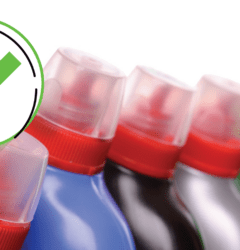25 Nov

The answer is written in the Guidance on the compilation of safety data sheets (SDS): “In all cases, suppliers of a substance or a mixture which requires a safety data sheet have the responsibility for its contents, even though they may not have prepared the safety data sheet themselves.”
A seemingly simple definition, which shows its traps when we look at the actual examples.
Before we start, let us clarify who the supplier is.
A supplier is, simply put, everyone involved in the supply chain. Thus, your supplier has responsibility towards you. And you are primarily responsible to those to whom you have sold a substance or mixture. A person supplying the substance or mixture is thus responsible for the content of the safety data sheet.
This means that the supplier is responsible even if he or she did not prepare or compile the safety data sheet (for example, a direct translation of the original). The basic principle is, when you hand out the safety data sheet, you are responsible for what is written on it.
So you should know (or get informed about) what you are handing out. I come across two types of cases.
First, there are direct translations of the original you received from the supplier. The translation was done carefully to the best of your abilities. So you think such safety data sheet should be applicable.
The basic principle is, when you hand out the safety data sheet, you are responsible for what is written on it.
And secondly, you admit you translated the safety data sheet by yourself; however, the responsibility still remains in the hands of your supplier. The sentence, characteristic for this finding, is: “I only rewrote the information that was already in the document.”
In both cases this is putting the responsibility on the supplier. Does this relieve you from the responsibility?
A simple answer is “no” because the legislation requires you to know what you hand out. This also means that you know the content of the safety data sheet and you know how to defend it.
This part referring to the responsibility, is written in the second part of the Guidance, which says: “In such cases, the information provided by their suppliers is clearly a useful and relevant source of information for them to use when compiling their own safety data sheets.”
The key part that is most commonly overlooked, is that it is only a useful and appropriate source of information. Nothing else.
Therefore, if you translated the safety data sheet, you remain responsible for its contents. However, there is a danger, that you unintentionally included errors in the translation of the SDS, which may have existed in the previous safety data sheet.
Before handing it out, the content of each safety data sheet should thus be verified to review it and ask for any possible explanations up the chain. This is because the content of the safety data sheet is only a source of information. And your duty is to verify it.
In the case that an error is detected, it must be eliminated. Only this way can you make sure you have done everything required from you by the legislation.
If you need help or you are running out of time, ChemiusExpert service is something you should consider.



Simona Miklavčič